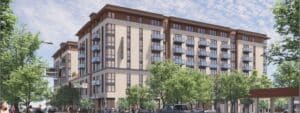San Jose – Greenbelt Alliance has won an award for its Bay Area Smart Growth Scorecard from the California chapter of the American Planning Association (APA). On Tuesday, as part of the annual statewide APA meeting in San Jose’s Fairmont Hotel, the association awarded Greenbelt Alliance its 2007 Education Project Award.
“The Smart Growth Scorecard is an innovative tool used to evaluate the effectiveness of smart growth planning policies of more than 100 San Francisco Bay cities and counties,” said Kurt Christiansen, Vice President of Administration with the APA’s California chapter. “Greenbelt Alliance has created an effective, engaging public education tool that does not exclusively educate, but also motivates cities and citizens to do more.”
Christiansen said that the award’s jurors concluded that “the Scorecard was beautifully implemented. The unique project facilitated dialogue between jurisdictions and engaged the public. Greenbelt Alliance should be commended.”
The Bay Area Smart Growth Scorecard received significant attention when it was released last June. As the first comprehensive evaluation of policies in every single city and county in the Bay Area, the report broke new ground in the effort to prepare the region for growth.
Although the San Francisco Bay Area is projected to grow by one million people by 2020, the report found that the region is ill-prepared for growth. On average, cities scored only 34%, doing only a third of what they could be to achieve smarter growth, and counties scored 51%.
Greenbelt Alliance, the Bay Area’s advocate for vibrant places and open spaces, said the region needs to change the way it grows.
“The Bay Area is a great place to live, and new growth in the right places can make it even better,” said Elizabeth Stampe, spokesperson for Greenbelt Alliance. “But cities and counties need to do better planning for growth. We can’t keep paving over our farmlands and natural areas. We can’t keep pushing people out to Tracy or Lodi. We need to invest growth in our existing cities.”
“This recognition of the Smart Growth Scorecard should send a message to city and county leaders; we have to do more to prepare for growth. We need action at the local level, right in our own backyards,” said Stampe.
Since the report’s release, Greenbelt Alliance has been working with elected leaders and Bay Area residents to help cities and counties adopt better policies to manage growth and improve the region’s quality of life. Later this year, the organization will release an updated edition of Smart Infill, a guidebook to help cities invest in urban areas to create more livable communities.
About the Scorecard:
The Bay Area Smart Growth Scorecard evaluated 101 cities and eight counties (San Francisco was treated as a city).
Cities were scored on:
Preventing sprawl; Making sure parks are nearby; Creating homes people can afford; encouraging a mix of uses; Encouraging density in the right places; Requiring less land for parking; and Defining standards for good development.
Counties were scored on:
Managing growth; Permanently protecting open space; Preserving agricultural land; Conserving natural resources; and Offering transportation choices.
The reports’ findings included the following:
• City scores: On average, Bay Area cities scored 34% (of a possible 100%). Petaluma had the highest score, with 70%; San Jose was second, scoring 69%.
• County scores: On average, Bay Area counties scored 51%. Alameda County was the top-scoring county with an overall score of 66%.
• Urban growth boundaries: Only 25 of 78 eligible cities (cities not bounded by water or other cities) had boundaries to define where development should and should not go.
• Parks: Only 31 of 101 cities required parks within walking distance of every resident.
• Affordable homes: Fifty-nine of 101 cities had inclusionary ordinances, which require new residential developments to include affordable homes.
• Mixed-use development: Seventy-nine of 101 cities allowed a mix of homes, shops, and jobs downtown and near transit, making it easier for people to walk from one to another.
• Park districts: In the report, six of eight counties had park districts, but last November, Napa County passed a measure to create a public agency to purchase and protect open space. Solano County is now the only Bay Area county with no public parks agency.
• Open space protection: Sonoma County scored 100% on open space protection for its strong funding commitment to protecting farmland as well as parks.




